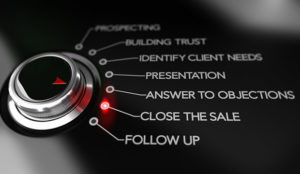
It was just six months ago that we saw what beacon technology could do on a wide scale. For Super Bowl XLVIII, the National Football League installed wireless transmitters in Times Square and at MetLife Stadium to send simple yet specific messages to smartphones: “bathrooms to the right,” “snacks to the left,” and so on. The deployment was “the boldest test yet” for the nascent technology, according to The New York Times.
My, how quickly time has flown.
Retailers since then have acquainted themselves with beacon technology and are rolling it out in their stores to connect with shoppers via their smart devices. While information such as restroom locations is still considered important, retailers are building on those early implementations to incorporate marketing promotions and customer service.
They are learning to navigate the different players in this space and to understand the nuances in their offerings. Apple has incorporated its iBeacon technology in iOS, and at least 50 other companies are building applications. The beacon universe is expanding.
Growth forecasts are robust, with one estimate putting beacon installs at 5 million within the next four years, for a 287 percent increase.
Department Stores, Retailers Embrace Beacon
HBC Department Store Group recently rolled out the Swirl in-store iBeacon marketing platform in its Lord & Taylor department stores in the U.S. and Hudson’s Bay stores in Canada.
The Swirl platform leverages Bluetooth Smart low-energy devices and Apple’s iBeacon technology to deliver targeted content and offers to consumers, based on their specific location and behavior at the store.
In merchandising areas throughout its stores, HBC is installing beacons that automatically deliver content and personalized offers to shoppers through an array of company-owned and third party mobile apps.
Another recent example of a retailer using this technology is GameStop; in certain test markets, it is deploying Shelfbucks, a beacon promotion platform for retail stores, with the goal of a national rollout later.
Here too, the goal is to bombard consumers with personalized content and offers by placing beacons on the store shelves. What is interesting about this deployment is that GameStop is including product ratings and reviews in its missives — content that is highly important to gamers. Promotional offers are also part of the mix.
Implicit in the installation and wide array of content delivered is a desire to stop that scourge of brick-and-mortar retail: showrooming.
Indeed, GameStop flat-out says in its announcement that Shelfbucks eliminates the need for additional online research and showrooming, “while saving shoppers time and delivering a superior shopping experience.”
The anti-showrooming angle was the focus of a recent Wall Street Journal article about the deployment.
Other Motivations
With these examples becoming more common, look for retailers to employ beacon technology for CRM-related uses beyond marketing and sales erosion.
One oft-cited complaint by shoppers is long checkout lines. Paypal Beacon is being deployed here and there by a few retailers with the goal of addressing this complaint. Unveiled last year, it is a Bluetooth Low Energy USB module that allows customers to make an in-store purchase using a mobile device.
It will be open season for retailers as more apps are developed to take advantage of beacon technology. Sales staff will be equipped with beacon-enabled apps to better identify and help high-value customers; data eventually will be mined by them to learn not only which displays and offers work best, but also where and when they’re most effective.
There is even room to expand on the first modest widespread use of the technology — directing people to the nearest restroom or snack bar.
San Francisco International Airport reportedly is rolling out a pilot program later this year using beacon technology to help blind travelers navigate their way through the airport.























































Interesting to see how a retailer is changing with time and adapting to a new retail market where agility is key to success. Retailers that adapt to a new retail economy with multiple strategies such as going mobile, online etc will be able to stay ahead of the curve.